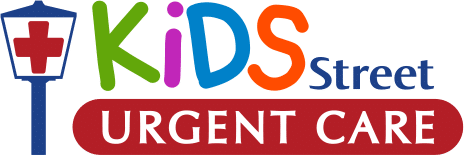Quick Summary: Class is back, supplies are out, and with it the usual mix of sniffles, sore throats, and upset stomachs. Here’s what we’re seeing now, what symptoms to look out for, and when your child should come see us at KidsStreet Urgent Care.
The Most Common Back-to-School Illnesses (Fall 2025)
Flu activity is still low in mid-September 2025, which is normal. We expect it to increase through October and November. Last season was tough for kids, with more pediatric flu deaths than in recent non-pandemic years. Vaccines are the best way to protect your child.
Norovirus and other stomach bugs were unusually active last season. We expect these to continue into fall and winter. Strep throat is still very common in school-aged kids. While most cases are mild, there are reports of more serious infections in older age groups. Pink eye spreads easily in classrooms and often causes quarantines or missed school.
Colds and Flu
Symptoms: fever, cough, sore throat, runny nose, body aches, fatigue
What’s new this fall: Flu is low right now but likely to go up. Other respiratory illnesses like RSV and COVID-19 are also in the mix in some places. Everyone six months and older should get a flu vaccine, ideally in late September or October, to be ready before the worst of flu season.
When to come to KidsStreet Urgent Care:
Bring your child in if they:
- Have a fever and you want them tested for flu, RSV, or COVID-19
- Are feeling especially run down with body aches and sore throat
Are coughing or congested, and symptoms seem to be getting worse instead of better
- Are under three months old with any fever
If your child is showing more serious warning signs like trouble breathing, bluish lips, chest pain, confusion, or dehydration, then please seek immediate medical assistance.
Strep Throat
Symptoms: sudden sore throat, pain with swallowing, fever, swollen neck glands; sometimes stomachache or headache in younger kids
What’s new this fall: We’re seeing steady numbers. Research continues to show more serious Group A Strep infections in adults, though in children the usual guidance still applies: testing and treating strep throat when confirmed.
When to come to KidsStreet:
Bring your child in if they have:
- A very sore throat with fever
- Trouble swallowing or drooling
- Rash
- Symptoms that do not improve after 2 or 3 days
We offer rapid strep testing and throat culture when needed.
Pink Eye (Conjunctivitis)
Symptoms: red, itchy or gritty eyes; tearing; discharge or crusting
Return-to-school basics: children may return when discharge has improved. If your provider prescribes antibiotics, bacterial pink eye often improves within 24 hours after starting drops. Viral cases do not need antibiotics, but we still recommend monitoring until symptoms ease.
When to come to KidsStreet:
If your child has eye pain, vision changes, swelling around the eye, or wears contacts, it’s best to be seen by a medical provider.
Stomach Bugs (Norovirus)
Symptoms: sudden vomiting, watery diarrhea, stomach cramps, sometimes low fever
What’s new this fall: because outbreaks were higher than usual last season, gastro bugs are something to watch closely. Good hand hygiene and quick isolation help slow spread.
When to come to KidsStreet:
Your child should be seen if you notice signs of dehydration like few to no tears, dry mouth, very little urine, or extreme fatigue. Also come in if vomiting or diarrhea drags on past three days.
If there is blood in vomit or stool, then please seek immediate medical assistance.
How KidsStreet Urgent Care for Kids Can Help
We understand how stressful it is when kids get sick during school. Your medical providers at KidsStreet are here with:
- On-site testing for flu, strep, COVID-19, and RSV when needed
- Flu vaccines for children and adults
- Same-day availability for visits
- Hours that work for busy families
KidsStreet Clinic Hours:
Monday – Friday: 8AM – 8PM
Saturday – Sunday: 9AM – 9PM
Find a location near you and let us help keep your child healthy this school year.

